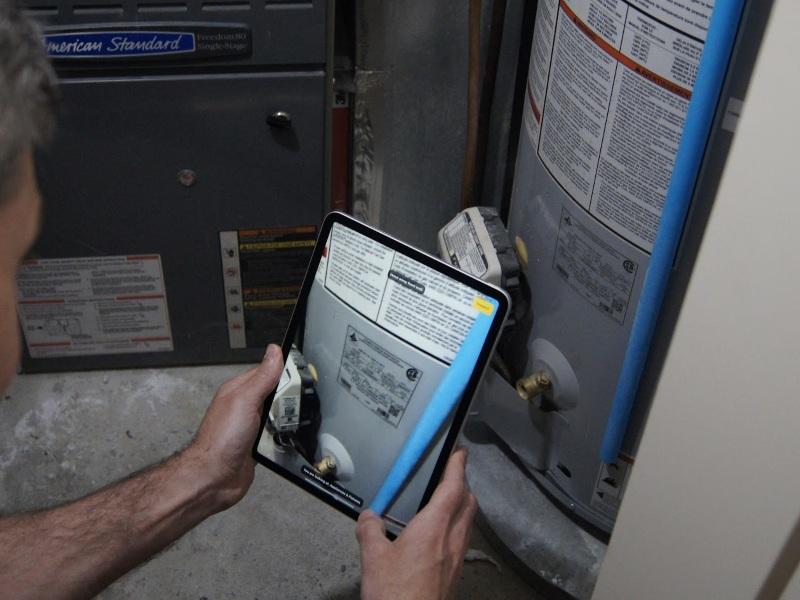 NERVA Energy Group Inc., the firm behind the largest multiresidential smart building conversion in North America, says its rapid growth is being propelled by rising interest in sustainability and financial savings among building owners interested in energy efficiency.
NERVA Energy Group Inc., the firm behind the largest multiresidential smart building conversion in North America, says its rapid growth is being propelled by rising interest in sustainability and financial savings among building owners interested in energy efficiency.
The Hamilton-based multi-disciplinary energy engineering firm placed No. 33 on the Globe and Mail’s 2023 Report on Business ranking of Canada's Top Growing Companies thanks to revenue growth of 1,239 per cent from 2020 to 2022.
NERVA's growing revenue stream is because it is “closing the loop on a lot of the challenges that building owners have seen and experienced over the years,” Juan Malvestitti, vice-president of corporate strategy, said in an interview with Sustainable Biz Canada.
Co-founder and CEO Rob Hallewick created NERVA in 2017 to bring experts in engineering, energy management, and mechanical and asset management together “to eliminate complexity, confusion and friction” surrounding energy performances.
As it wraps up its latest smart building conversion project with Drewlo Holdings, Malvestitti said the company hopes to further educate building owners on the opportunities in the field.
About NERVA’s services
Hallewick, a refrigeration expert, was approached to develop energy efficiency and environmental strategies six years ago. This was an era when building owners often focused on LED lighting, Malvestitti said, and were at a standstill as to taking the next steps.
To address this, Hallewick co-formed NERVA to create a team of subject experts to design energy performance strategies. The firm serves as an alternative to having a multitude of teams, which can create redundancy and inefficiency, Malvestitti said.
NERVA's team evaluates building performance and highlights its mechanical inefficiencies. It starts by walking through a building, analyzing three years of utility data, performing an on-site equipment inventory and bringing engineers to understand potential solutions for inefficiencies. Energy and asset managers can then figure out potential outcomes and the payback period for a project.
The company has worked with Canadian real estate portfolio owners such as Dream, Morguard Corporation, Allied Properties REIT and Skyline Group of Companies.
The Drewlo project
A NERVA project Malvestitti emphasized is the impending completion of what he called the largest multiresidential smart building conversion in North America.
NERVA partnered with London, Ont.-based Drewlo Holdings, one of Canada’s largest multiresidential owners, on the project.
In 2022, NERVA was tasked by Drewlo to identify buildings for a pilot program. Drewlo eventually authorized the conversion of its entire portfolio of approximately 80 buildings by 2023.
Building systems were analyzed and optimization plans created for each property – including boilers, chillers, hot water and others. Every piece of mechanical equipment is now metered and individually controlled, with energy performance tracked in real time.
The projected benefits are a 15 per cent to 18 per cent return on investment, and a 25 per cent to 35 per cent reduction in greenhouse gas emissions.
In an asset class which can struggle to innovate because rent controls can limit the equity available for capital projects, Malvestitti said NERVA helped yield a return to Drewlo and added "tens of millions of dollars" to asset value across all the buildings by reducing ongoing expenses.
NERVA is encouraging Drewlo to enter into the running for awards from organizations like The Federation of Rental-Housing Providers of Ontario, Clean50 and CAGBC for the smart building conversion.
Realcomm, a U.S. technology and real estate conference, recognized the NERVA and Drewlo project in its smart building category, according to Malvestitti.
Expanding demand for energy efficiency from building owners
The significant revenue growth for NERVA comes from solving the challenges that building owners are facing, such as the lack of accountability in the industry and the struggle to develop strategies, Malvestitti said.
Some building owners, NERVA found, buy into singular solutions that overlook the importance of seeing buildings as an ecosystem, such as implementing technology like artificial intelligence to optimize operations but with no oversight.
The dovetailing of financial pressures, environmental regulations and taxation are bringing energy efficiency to the forefront as an issue for building owners and asset managers. But there is a lack of education on achieving decarbonization, he continued.
“Eliminating carbon, while it’s not hard because you simply replace a gas-fired appliance with an electric appliance, is an extremely expensive exercise, one that you couldn’t financially justify or substantiate if it was a straight swap.”
Malvestitti said NERVA’s success comes from blending environmental solutions with financial returns. Energy efficiency upgrades are often expensive and may be put on the backburner due to concern for stakeholder returns. NERVA is raising awareness that energy is a financial opportunity rather than a liability.
NERVA has focused on educating the marketplace on the principles of conservation, optimization and conversion, and how there is no one “magical pill” solution that saves energy, reduces carbon and provides a return.
Rather, it comes from a granular understanding of the performance of each building and designing a unique strategy for each one.
EDITOR'S NOTE: This article was updated to include additional insights, provided by NERVA, into the process and the systems which were involved in the Drewlo building conversion project.










